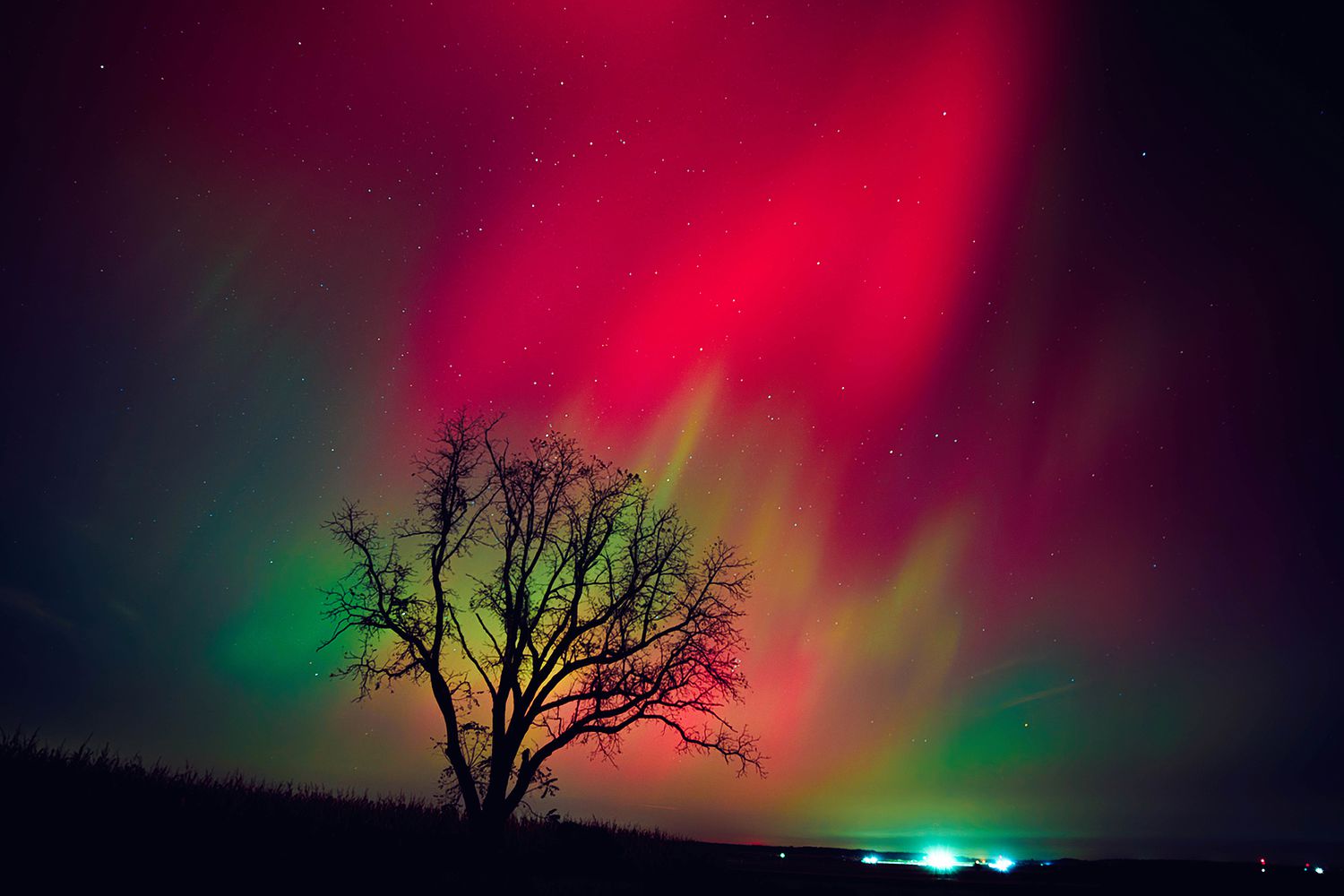Fireworks won’t be the only things lighting up the sky on New Year’s Eve!
Another round of northern lights is expected to be visible from parts of the United States on Wednesday, Dec. 31, producing a spectacular display of colors in the night to close out 2024.
A geomagnetic storm is anticipated from New Year’s Eve through Jan. 1, according to the latest National Oceanic and Atmospheric Administration (NOAA) forecast. The storm is predicted to start as G3 (strong) and weaken to a G1 (minor) watch by the end of its span.
Geomagnetic storms result from coronal mass ejections, also known as an eruption of solar material, is anticipated to reach and impact Earth. According to NASA, “the Sun emitted three strong solar flares on Dec. 29, peaking at 2:18am, 11:14pm and 11:31pm ET.”
The colors and brightness of the northern lights, or aurora borealis, depend upon four factors: geomagnetic activity, location, darkness, and timing. The level of geomagnetic activity is measured on the Kp index, which ranges from 0 to 9.
According to NOAA’s scale, Kp in the range of 0 to 2 (which is forecasted for Jan. 1) will be far north, not as intense nor active in comparison to higher levels. Storms in the 3 to 5 range are “brighter” and “can be quite pleasing to look at” if in the right place, per the agency.
While northern lights are considered a rare phenomenon for most parts of the United States, they were visible in the country several times in the past few months. The East Coast (including New Jersey and New York) had a breathtaking sight of the lights in October.
Read on for how to watch the Northern Lights on New Year’s Eve!
When will the northern lights be visible?
Lokman Vural Elibol/Anadolu via Getty
The northern lights are predicted to be visible from parts of the United States between Dec. 31 and Jan. 1 next year, according to NOAA. The event will be the strongest on New Year’s Eve (G3) and weaken to a G1 storm the next day; however, the agency reports it may “upgrade to a G2 watch.”
Where will the northern lights be visible?
The New Year’s Eve and New Year’s Day northern lights are predicted to be visible in many of the northern states and parts of the lower midwest to Oregon. NOAA suggests those interested in spotting the display check the “aurora viewline” tool on their website for the most accurate updates.
How to watch the northern lights?
Carlos Avila Gonzalez/San Francisco Chronicle via Getty
The best part about the northern lights? You don’t need any advanced technology to catch a glimpse! All viewers have to do is point their eyes to the sky to take in the breathtaking view; though, of course geographical location matters.
Also, viewers must take into consideration the light pollution surrounding them. It’s best to watch in total darkness, away from bright city lights (or New Year’s Eve fireworks, in this case) for the best sight of colors in the night sky.
Telescopes and binoculars are not needed.
How to take photos of the northern lights?
Smartphones have the advanced technological capability to capture the northern lights on camera so you can remember the spectacular sight forever!
All users have to do is toggle their phones to “Night Mode.” This setting can oftentimes pick up the northern lights even when they’re not visible to the naked eye!
Authorities in Iceland have shared a few tips on how to best capture the northern lights. According to the site, photographers should use a tripod, which is “essential for long exposures in low light;” lock your phone’s focus to the “infinity” setting; do not use a flash; and consider apps like Northern Lights Photo Taker, NightCap Camera, ProCamera and Slow Shutter for iOS. For Android users, consider ProCam X Lite.
Read the full article here








